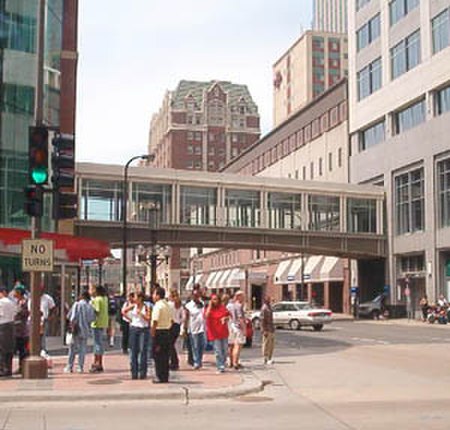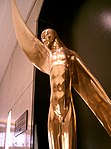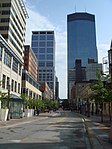Minneapolis Skyway System

The Minneapolis Skyway System is an interlinked collection of enclosed pedestrian footbridges that connect various buildings in 80 full city blocks over 9.5 miles (15.3 km) of Downtown Minneapolis, enabling people to walk in climate-controlled comfort year-round. The skyways are owned by individual buildings in Minneapolis, and as such they do not have uniform opening and closing times. The 11 miles of skyway are comparable to the Houston tunnel system, the systems in Canadian cities such as Toronto's PATH, Montreal's Underground City, Calgary's 11-mile +15 system and the 8-mile Edmonton Pedway system. The Minneapolis skyways connect the second or third floors of various office towers, hotels, banks, corporate and government offices, restaurants, and retail stores to the Nicollet Mall shopping district, the Mayo Clinic Square, and the sports facilities at Target Center, Target Field and U.S. Bank Stadium. Several condominium and apartment complexes are skyway-connected as well, allowing residents to live, work, and shop downtown without having to leave the skyway system.
Excerpt from the Wikipedia article Minneapolis Skyway System (License: CC BY-SA 3.0, Authors, Images).Minneapolis Skyway System
Marquette Avenue South, Minneapolis
Geographical coordinates (GPS) Address Nearby Places Show on map
Geographical coordinates (GPS)
| Latitude | Longitude |
|---|---|
| N 44.976388888889 ° | E -93.270833333333 ° |
Address
7 St - Stop B
Marquette Avenue South
55401 Minneapolis
Minnesota, United States
Open on Google Maps









